- Home
- Michael McBride
Ancient Enemy Page 4
Ancient Enemy Read online
Page 4
I left Yanaba to nose through the pinecones and needles for piñon nuts as I worked my way to the edge of the cliff and the start of what hardly qualified as a path by any definition of the word. I caught a glint of sunlight from the National Forest Service sign far across the canyon, in the scenic overlook off of Mesa Top Loop Road, where, during the summer, the tourists snapped pictures of these dwellings with telephoto lenses. I intended to get a far closer look.
A toe trail was literally just that: a series of faint indentations in the sandstone barely deep enough to accommodate your fingers and toes as you crawled down the steep rock like a gecko. I couldn’t imagine having to do this every day to reach my home, especially in the dead of winter when the frigid winds whipped through the valley and every surface was rimed with ice. You’d have to be pretty terrified of something to even consider it.
It took forever to negotiate the trail. At least that’s how it felt. By the time I reached level ground, my muscles ached in places I didn’t even know I had muscles, places that were going to make my ride home a lot more uncomfortable. I kicked a rock over the edge and watched it flutter and flare like a bird before diving to the slickrock and skipping over the steppe below. It vanished from sight long before I heard it clatter down the talus.
The walls of the pueblo were built so close to the ledge there was hardly room to walk. They were composed of flat chunks of sandstone and granite fitted together like bricks. The dwellings toward the center remained largely intact, while the wind and the elements had conspired to topple those at the periphery. I ducked through the first patent entrance and into a blessedly cool darkness that spared me the brunt of the wind and the prospect of falling to my death. The walls between dwellings had fared about as well as those along the front. They’d fallen in sections through which I could crawl from one tiny home to the next if I wasn’t worried about tearing my jacket or the knees of my pants. It was hard to imagine people living here in any kind of numbers. The individual dwellings were smaller than prison cells and even I had to duck to keep from knocking myself unconscious on the low roof near the back. It almost felt as though this entire pueblo had been built for children rather than adults, like some last bastion of safety for the next generation should the battle their parents waged be lost.
I shivered at the thought. There was something about the idea of a vanished society constructing a tiny sanctuary, which was nearly as hard to see from any vantage point as it was to reach, with the sole intention of hiding their children from an enemy it feared it could not defeat that rang true to me. I imagined frightened mothers whispering for their children to be brave as they sent them crawling over the pitfall, while all around them the war cries of their fathers echoed through the valley. Those children sitting in the cool darkness where I now stood, wondering what the resultant silence meant and how much longer they would have to stay hidden before someone eventually came to retrieve them.
I pried the rattle out from beneath my waistband and shook it. The pale blue glow diffused through the small room. Petroglyphs appeared on the sandstone where moments before I had seen nothing. They were old and faded and indistinct, little more than the powdery residue that remained of whatever phosphorescent medium they’d used to paint it. I recognized men and animals. Coyotes and deer and turkeys and pronghorns and bears. Animals like bison and mountain goats I had a hard time imagining had ever roamed this area in any kind of numbers, and yet here they were, immortalized on the stone by hands I would have been surprised to learn were even as old as mine.
And there was something else I recognized, not from the history books or from legends, but from a chunk of rock I suspected originated somewhere nearby and somehow found its way into my grandfather’s possession. There was the animal with the hunched back and the oblong head with the horns of a ram. It must have been utterly terrifying to have been captured in such painstaking detail by what I now believed to be children.
Children who might or might not have understood that their parents would never be coming back for them.
I watched that process of comprehension play out before me on the walls as I crawled from one room to the next, shaking the rattle as I went. I saw great warriors with spears and arrows, etched larger than life by those who revered them, and I saw an enemy against which there was no doubt they would fall, even in the minds of those who drew them. And I watched that number of warriors diminish and their eyes turn to Xs, watched the same thing happen to the animals, and wondered exactly what kind of view this pueblo afforded.
Eventually, I encountered a section where the rear wall had cracked and portions of the storyline had crumbled away and fallen to the ground. This was where my grandfather’s slab had originated. Right here in this very room where once a child had knelt in the darkness, painting his or her final testament onto the sandstone while waiting for the eventual return of his or her parents, or for the enemy against which they fought to scurry over the edge of the mesa and find where they’d been hidden.
And in the next to the last room I found the depiction of another location I recognized. A steep cliff on top of which was the unmistakable design of the Sun Temple. The original construction consisted of fifteen-foot double walls filled with rubble, fortified in a manner well beyond any of the other dwellings. A construction, archaeologists believed, that was abandoned before its completion. And below it, halfway up the steep cliff, was a doorway into which more of the hunched creatures with the horns appeared to be crawling, bringing with them stick men and animals with Xs for eyes. And one creature, right in the middle of the doorway, that I couldn’t help but feel as though was staring right at me through the centuries.
There was no continuation of the storyline in the last room. Nothing but bare rock.
I crawled back out and sat on the ledge with my feet dangling over the precipice for a while. The still darkness, which had initially felt so wonderful after riding so far in the frigid wind, had suddenly become smothering. I reveled in the sensation of the movement of fresh air against my bare skin. There was something about this place that made me increasingly uncomfortable, as though rather than an ancient dwelling, it had served as a tomb.
I climbed back up the toe trail and shared a half-frozen bottle of water with Yanaba before hauling myself up onto her back. We were both going to need it for the long ride ahead.
TEN
The Sun Temple was named for a single design found on a rock in the southwest corner. Experts believed construction on the temple commenced in 1275, well after the Anasazi moved from their original dwellings on the mesa tops into the defensible cliff dwellings, and then was abandoned with the remainder of the Canyons of the Ancients a year later. The truth was no one actually knew the function of the structure high above me on the pine-crowned bluff, with its reinforced outer walls and both circular and square inner rooms.
From where I stood, shielding my brow from the blinding sun and its reflection from the snow, I couldn’t even see it all the way up there. I was looking for something entirely different, regardless, and I was having a devil of a time finding it. The temple itself had been built on a great stone pinnacle at the confluence of two vast canyons. I’d wasted precious hours searching the scree-lined steppes and dense pine thickets of Cliff Canyon and was nearly to the point of calling Fewkes Canyon a total wash when I finally saw what I’d come here to find. It certainly wasn’t a massive cave crawling with great hunchbacked animals with horns, nor did it really look like it had a whole lot of potential. It was little more than an oblong amoeboid shadow high up on a ledge amid the boulders that had collected there through the eons after crumbling from the buttes, the kind of thing you would never see if you weren’t specifically looking for it. Truth be told, I couldn’t be entirely certain it actually was the mouth of a cave and not a trick of the late afternoon shadows, that I wasn’t just seeing what I wanted to see. And even if it was an opening, it barely looked large enough for a coyote to wriggle through, let alone someone my size, but
I could worry about that later. The biggest problem from my current vantage point was figuring out how in the name of God I was going to get up there.
Nearly a thousand years ago, there’d been toe trails and handholds that were now smoothed to mere impressions by the abrasive winds of time, tall wooden ladders that connected ledges that had since fallen to ruin, and paths that had grown trees and shrubs that were now impossible to get around. And even with that in mind, it was hard to imagine that there was a single inch of this area that hadn’t been explored and excavated by the anthropology classes from every major university that descended upon this area every summer in hopes of learning why, after building such a truly phenomenal society, the Anasazi had simply disappeared without a trace.
The sun was already well into its descent by the time I picked my way up the talus slopes and navigated the seemingly insurmountable cliffs to reach the orifice I’d seen from below. It was a narrow crevice in the limestone, a point where the warring currents of ancient rivers had met and created curious eddies and unique erosion patterns. It was nearly sealed by the loose rock that had accumulated over it with the passage of time. The stones made clacking and clattering sounds when I shoved them out of the way and sent them tumbling out over the nothingness.
The rocks inside were dramatically cooler and their smooth surfaces felt almost polished. It was hard to believe they were composed of the same type of stone as the dry limestone riddled with superficial cracks all around me. I had to lower myself to my belly to see inside. As I stared into the darkness, its cool breath upon my face, I had to wonder what I was doing here. Granted, we’d lost a good number of animals and for the life of me I couldn’t figure out what kind of predator had attacked them, but the notion of hunting it by following the clues I gleaned from petroglyphs that were only visible when I shook my grandfather’s rattle filled with quartz shards seemed positively ludicrous.
I glanced back down below me to the bottom of the ravine, where Yanaba grazed amid the trees. It was going to take hours to get back down there. As it was, there was no way I’d be home in time for dinner and I’d be lucky if I made it before nightfall. What the hell was I doing up here anyway, chasing mythical horned creatures with an old rattle? I hadn’t slept in days and every inch of my body had begun to ache. What I really needed was sleep. Everything would make more sense without the fog of exhaustion making it so hard to think clearly. All of the killing was probably the result of some coyote contracting rabies from a ground squirrel. Yet here I was, halfway up the mountainside, peering into a cave that had been pretty much exactly where the petroglyphs said it would be. I’d be a fool to leave without seeing what was inside.
The opening was maybe a foot tall, if that, and the edges were lined with rocks that nearly sealed it in spots. I had to stick my entire left arm through first, turn my head sideways, and push off with my feet to force myself through. By the time my chest cleared the rocks, I could feel where the uneven ground slanted downhill away from me. I used my elbow for leverage and pulled until my entire body was inside.
The sound of my harsh exhalations echoed, giving me some indication of the size of the space around me. It had to be a good twenty degrees cooler and the light from the glaring sun seemed to simply die at the slender entrance, little more than diffusing into the blackness. I pried the rattle from beneath my waistband and shook it. I would have gladly traded it for a Maglite, but the last thing I’d expected when I left the house this morning was to find myself spelunking in a cave where once upon a time horned monsters had dwelled.
The mechanoluminsecence of the crystals inside the rattle limned the cavern walls with a bluish aura amplified by the crystals and phosphors embedded in the stone itself. I was in a small cavern roughly the size of my bedroom. The slant of the floor was severe and rocky and tapered to another orifice lined with stalactites, near the ground at the bottom. The surfaces were slick with the accretion of minerals left behind by the prehistoric ocean.
It wasn’t quite as hard to slither through the second opening as the first, but the stalactites were a lot more delicate than I initially suspected. I broke one off with a bump of my shoulder and it nearly impaled me when it fell. I felt more broken formations grinding together under my belly and thighs, which made me wonder what had crawled through here before me and how long ago it had done so.
I emerged into a cavern easily five times the size of the last. The low ceiling made it impossible to stand upright. I walked in a crouch, shaking the rattle as I went. There were stalactites and stalagmites everywhere and thick columns where they joined. The shadows they cast moved as I moved, reminding me of the way the moonlight filtered through aspen branches in a windstorm. I followed something of a wending path through the maze, guided by phosphorescing smears on the ground, until the stone above me abruptly lifted and I found myself in a much larger cavern where the dim light from the rattle couldn’t even reach the far wall or the ceiling. All I could see were the sharp tips of the stalactites suspended in darkness as thick as tar.
Condensation dripped with plinking sounds that echoed around me.
Larger formations dominated the room. Massive creations that appeared to have the consistency of wax, but were every bit as hard as the ground upon which I walked. There were broad-based columns that looked like frozen waterfalls. Sheets covering the walls that resembled folded taffy. Giant rounded pyramids reminiscent of enormous termite mounds. The mineral content in their clear outer layers made them appear to glow in the flickering blue glow of the rattle.
There was something else. Deeper inside.
I approached one of the mounds, shaking the rattle as I advanced. There was a dark shape at its core. An ill-defined silhouette, trapped inside a flowstone-draped stalagmite that was even taller than I was. The air inside the cavern grew colder as I neared. My skin prickled with goosebumps and I shivered despite my heavy coat.
There was something about the silhouette. Something both foreign and strangely familiar.
The quartz luminescence defined the hazy shape inside the rock. It was a statue. Presumably sculpted in here so long ago that the leached minerals had accumulated on top of it to such a degree that they ultimately entombed it. Detail was lost to the attenuation of the outer layers, but it was obviously the representation of a man. Standing upright, knees bent, his arms drawn behind him and his chin resting against his chest.
You couldn’t live in these canyons for any length of time without getting something of a feel for the artistic style of the Anasazi, and the Navajo and Ute who followed. There were petroglyphs everywhere you looked in Southwestern Colorado. Potsherds and arrowheads. Traditional textiles and jars. Maybe even a few small totems and carvings, but nothing like this. Nothing nearly as large or as anatomically proportionate.
I walked in a circle around it. From behind, it almost looked as though its wrists were bound and tethered to the ground. A stalagmite ran straight up its spine, between its biceps. I couldn’t tell for sure, but there appeared to be ropes around its chest, lashing it to the stalagmite.
I had to kneel against the base and strain my neck to even partially see the indistinct lines of its face. The layers of waxy rock grew thinner near the top, affording a better view of the oblong shape of its bald head. No, its bare skull.
I leaned closer and shook the rattle right up against the stone in an effort to better see. The detail on the skeletal face was amaazingly realistic, rivaling the skill of the Renaissance sculptors half a millennium later. It was so lifelike and detailed. The canine teeth were disproportionately long, those in front slightly crooked. The triangular peak of the nasal bones was sharp, the ridge of the brow severely angled back toward the sloped forehead. The eyes were deep pits of darkness.
It wasn’t a statue. It was too perfect, right down to the imperfections that gave it just the right amount of realism. Whatever it was had once been a living, breathing being before it was bound to the stalagmite.
And left to die.
&
nbsp; ELEVEN
I stepped backward. Caught my heels on the uneven floor. Landed on my rear end. Dropped the rattle.
The darkness swarmed from where the bluish glow had held it at bay. I ran my palms across the ground until I found it once more and shook it for everything I was worth. The resultant light was little more than a single candle could generate, but I was fortunate to have it.
I again approached what I was suddenly certain was anything other than a sculpture. Its exposed bones glowed faintly, as though painted with the same phosphors as the slab of rock in my grandfather’s room and on the rear wall of the House of Many Windows. The remainder of the body was covered with a taut, desiccated layer of leathery skin that appeared almost mummified.
I risked a tap on the rock formation. It was crystalline and solid. There were deep gouges in it where it almost appeared as though someone had attacked it with sharp implements in an effort to free the remains trapped inside. I held my hand up to the marks. Aligned my fingers with them. Quickly withdrew my hand.
The fit was nearly perfect.
I stared again at the face of the being inside. At eye sockets that looked like they’d been stretched too wide. At teeth so large they must have made the absent lips bulge.
Suddenly, I felt as though the temperature had fallen another ten degrees. I wanted nothing more than to feel the warmth of the sunlight on my face and the fresh air against my skin.
I turned around and, for the first time, truly appraised my surroundings. I was positively surrounded by the large mounds, the dark shadows at the hearts of which I could see even from a distance.
And worse.
Fragments and shards encircled the bases where it looked as though something had attempted to free the creatures trapped inside, leaving behind the phosphorescent droplets and smears on the ground I had followed through the maze of columns.

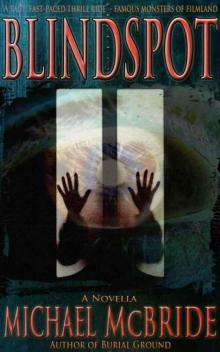 Blindspot
Blindspot Blizzard of Souls
Blizzard of Souls Mutation
Mutation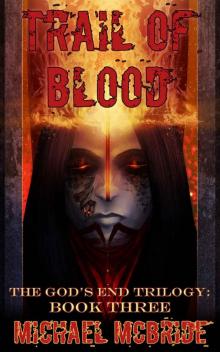 Trail of Blood
Trail of Blood Brood XIX
Brood XIX The Fall
The Fall Snowblind II: The Killing Grounds
Snowblind II: The Killing Grounds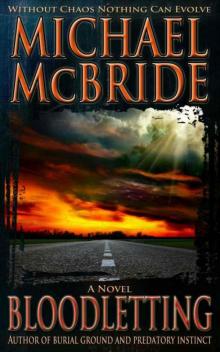 Bloodletting
Bloodletting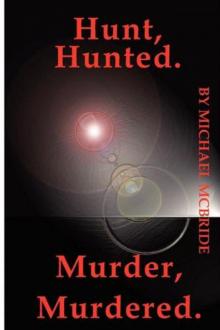 Hunt Hunted, Murder Murdered
Hunt Hunted, Murder Murdered The Bloodspawn
The Bloodspawn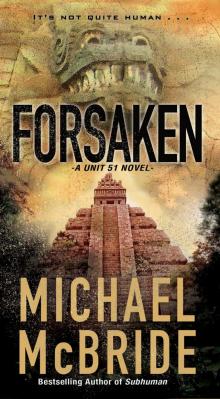 Forsaken
Forsaken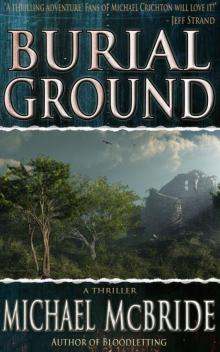 Burial Ground
Burial Ground Subhuman
Subhuman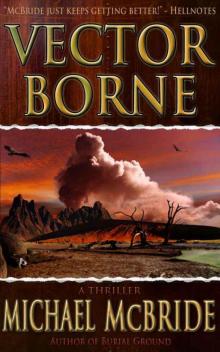 Vector Borne
Vector Borne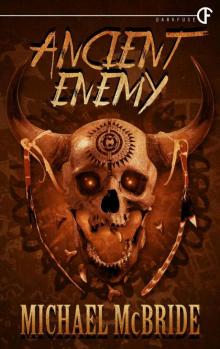 Ancient Enemy
Ancient Enemy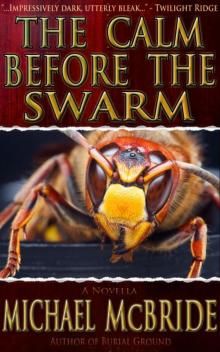 The Calm Before The Swarm
The Calm Before The Swarm Innocents Lost
Innocents Lost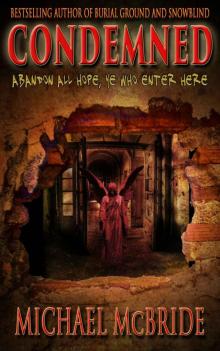 Condemned: A Thriller
Condemned: A Thriller